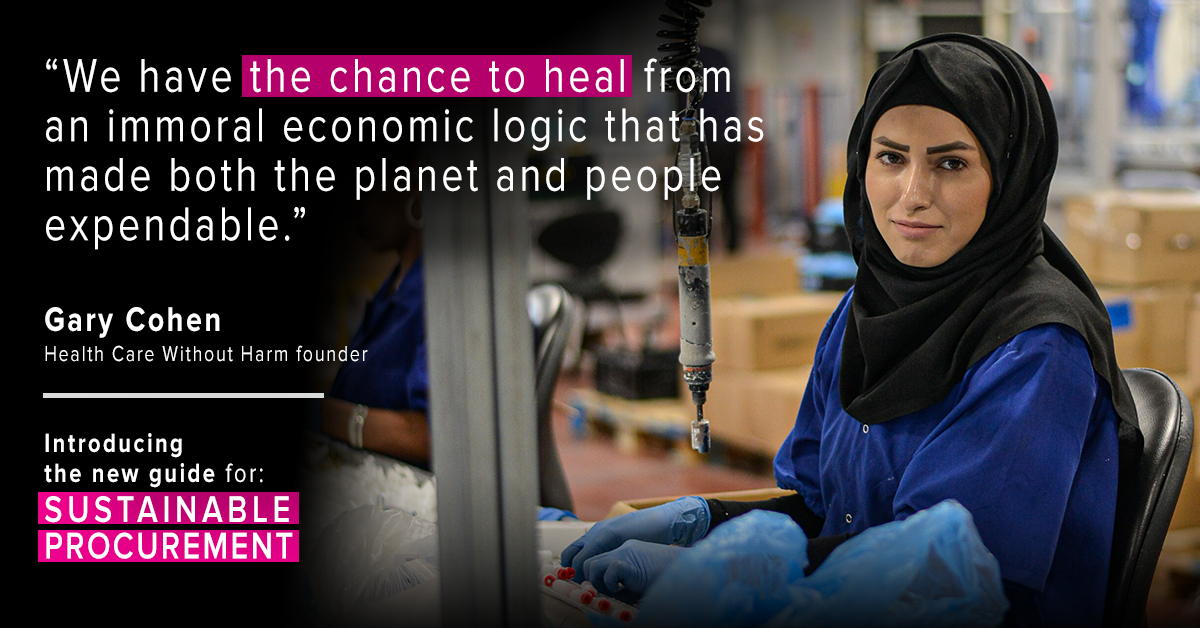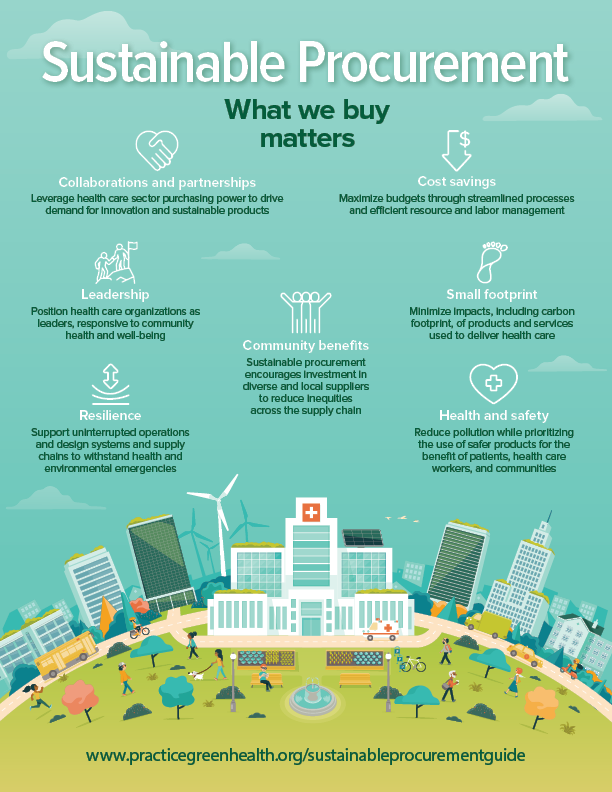Health care procurement can heal the supply chain. Our guide shows how.

Health care today has a dual challenge and responsibility: to lead in sustainable and equitable purchasing practices. The COVID-19 crisis exposed the fragility and vulnerability of our global supply chains. It also has given us an opportunity to move toward localized supply chains that not only reduce environmental harm but also provide local business opportunities and jobs.
A groundbreaking new guide, featuring stories from 25 health care organizations around the globe, offers a roadmap to develop a sustainable purchasing strategy that prioritizes community and environmental health and safety while reducing costs.
More than 70% of emissions from the health care sector are primarily derived from the health care supply chain – the production, transport, use, and disposal of goods and services that the sector consumes. – “Health care climate footprint report” by Health Care Without Harm and Arup
Every day, health care health care organizations make choices about the products and services they use, from medications, food, and hospital supplies, to the energy source used for lighting and powering operating rooms. Our collective purchasing power can shape the marketplace, increase demand for sustainable products, and embrace our broader healing mission.
When deciding on products and services, health care organizations should consider not only effectiveness but also overall environmental footprint, workers and patient safety, and community impact.
View the guide
Kaiser Permanente and Advocate Aurora Health spoke in a recent webinar about how they have successfully integrated sustainable procurement strategies into their purchasing, view the recording hear their story and learn more about the new guide.

